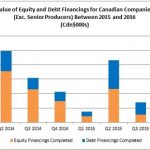The US dollar was mixed last week. Consolidative technical pressure, after it spurted higher at the end of the previous week with the help of a dovish ECB and rate cuts by the PBOC, and month-end pressures dominated. There was some disappointment that the BOJ did not ease, helping send the yen higher before the weekend. Heightened expectations for an RBA rate cut in the week ahead weighed on the Australian dollar. The euro itself was virtually unchanged on the week and off 1.5% on the month.
The dollar gained against most emerging market currencies though there were a few notable exceptions. The rebound in oil prices may have helped the Mexican and Colombian pesos and Brazilian real to close the week on a firm note (0.5% and 0.7% and 0.5% respectively) to lead the emerging market currencies. The Chinese yuan also rose about 0.5% last week, helped by speculation of intervention and reports that capital controls may be lifted in a potential experiment in the Shanghai free-trade zone.
The dollar’s technical tone is not particularly strong as the new month starts. The next big push in the divergence is not until December when the ECB may ease, and the Fed may tighten. The late dollar longs may have their conviction tested. Even a strong jobs report at the end of the week may be unable to restart the dollar’s upside momentum.
The Dollar Index rallied about 4.4% in the second half of October. It went from the lower end of its recent range to the upper end. The data that may determine next month’s policy decisions have not been collected yet. It seems prudent for dollar bulls to take some profits in front of 98.00 in the middle of last week. Assuming the correction of the advance in the last couple of weeks has begun, the first target is near 96.30, but we suspect the 95.70 area is the main objective.
The euro’s dip brief below $1.09 seems to denote the end of a technical move. Key support is at $1.08, but for short-term participants it is a bridge too far, and the first sign momentum has slowed after a big move, others get out as well. Note that at $1.0940 the euro had given back 61.8% of its gains from March through August. That bounce in the euro followed a nine-month slide that began from near $1.40 in Q2 14. The March-August recovery in the euro fell shy of the 38.2% retracement of the preceding nine-month drop.














Leave A Comment